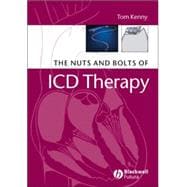
Note: Supplemental materials are not guaranteed with Rental or Used book purchases.
Purchase Benefits
Looking to rent a book? Rent The Nuts And Bolts of Icd Therapy [ISBN: 9781405135115] for the semester, quarter, and short term or search our site for other textbooks by Kenny, Tom. Renting a textbook can save you up to 90% from the cost of buying.
Mr. Kenny has experienced both sides of training for cardiac rhythm management devices: in his early years, in clinical practice, caring for such patients, and today, as an executive charged with training the many people who use St. Jude Medical products.
Jo Ann LeQuang has worked with Tom Kenny for over ten years and was most recently Director of Communications at St. Jude Medical. She now owns LeQ Medical Communications based in Angleton, Texas. Jo Ann writes a regular medical column for a local Texas paper, translated Berndt Luderitz's book A History of the Disorders of Cardiac Rhythm (from German into English, 1995), and writes regularly for HMP Publications (medical magazines, newsletters, journals).
| Preface | vii | ||||
|
1 | (11) | |||
|
12 | (4) | |||
|
16 | (4) | |||
|
20 | (6) | |||
|
26 | (11) | |||
|
37 | (6) | |||
|
43 | (7) | |||
|
50 | (12) | |||
|
62 | (8) | |||
|
70 | (7) | |||
|
77 | (9) | |||
|
86 | (7) | |||
|
93 | (13) | |||
|
106 | (9) | |||
|
115 | (8) | |||
| Glossary | 123 | (14) | |||
| Index | 137 |
The New copy of this book will include any supplemental materials advertised. Please check the title of the book to determine if it should include any access cards, study guides, lab manuals, CDs, etc.
The Used, Rental and eBook copies of this book are not guaranteed to include any supplemental materials. Typically, only the book itself is included. This is true even if the title states it includes any access cards, study guides, lab manuals, CDs, etc.